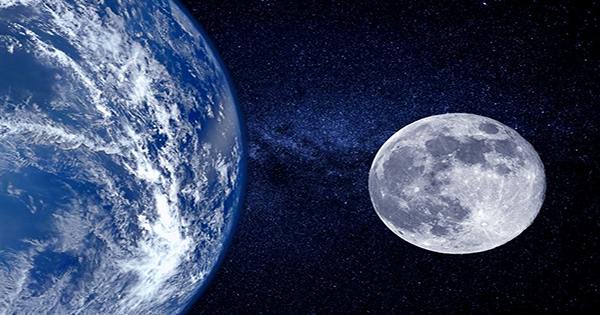NASA has completed its preparations and is prepared to launch. Soon, humans will visit the Moon once more, this time in a manned outpost. However, astronauts must be able to cultivate their own food for this effort to be successful. Researchers from Norway are working to make this achievable.
Regolith, as geologists refer to the lunar “soil,” is really a powder in which it is challenging to cultivate plants. Not only that, but the moon has temperatures that may rise to 200 degrees during the day and drop to – 183 degrees at night.
According to SINTEF researcher Galina Simonsen. Despite this, Simonsen and her colleagues from the worldwide project LunarPlant, which is led by NTNU Social Research and the Center for Interdisciplinary Research in Space (CIRiS), think that food plants may be grown on the moon.
Meeting this problem will need the sensible use of existing resources, as well as adequate lighting and an artificial environment. It is also necessary to locate a replacement for rich soil.
Hydroponics may already be familiar to you, according to Simonsen. This technique for growing plants in water is completely feasible if the water has enough nutrients. The success of this initiative depends on the implementation of this methodology, she says.
How much water is there on the moon?
According to Simonsen, radar data shows that the polar regions of the moon contain more than 600 billion kilos of ice. About 240,000 Olympic-sized swimming pools could be filled with this. Although it is far less than what we have on Earth, it will be sufficient for humanity to continue some level of activity. The ice will thaw, creating water that will be utilized to grow food plants, the woman adds.
However, enough nutrient levels in the water are necessary for plant growth. The “fertilizer” that will be used on the moon will really come from the astronauts themselves in the form of pee, which is a byproduct of human feces. because the cyclical utilization of resources is the foundation of our endeavor.
According to SINTEF researcher Galina Simonsen. Despite this, Simonsen and her colleagues from the worldwide project LunarPlant, which is led by NTNU Social Research and the Center for Interdisciplinary Research in Space (CIRiS), think that food plants may be grown on the moon.
“Barriers linked to the use of urine as a fertilizer include the strict regulations governing the use of human waste in food plant cultivation,” explains Simonsen. “In addition, the handling of human urine is generally unpleasant, combined with the odor and the fact that it releases long-lived organic environmental toxins and trace metals,” she says.
We must conduct thorough and reliable analyses of plants growing in “liquid gold” in order to determine safe threshold levels and then approve their usage as a food source. Additionally, the plants themselves must have enough nutrition.
According to Simonsen, “It may be possible to extract some nutrients for plant growth from the lunar regolith (the lunar soil)”. “But they’re not exactly lavish. Nitrogen, potassium, and phosphorus can all be found in urine. Other edible plants that can help with the control of the water quality and nutritional balance in the system can be grown alongside salad plants if you are growing them, the expert advises.
Soil? True soils are only found on Earth.
Soil is another part of the LunarPlant project. In the case of the moon, this is the absence of soil. The soil on Earth not only offers nutrients, but it also serves as a home for plants to “live.”
“We’re trying to figure out how to get the plants to grow without collapsing,” Simonsen explains. “This entails determining a growing medium that allows plants to develop a root system that provides adequate support,” she explains.
Plants want to push their roots into something substantial in order to stand erect. Some hydroponic horticulturists currently utilize rockwool. But, at least on the moon, rockwool is not a sustainable material.
“Sending rockwool to the moon could cost up to NOK 20 million per kilo,” says Simonsen. We must be able to employ a material that is completely round because of this. It must be portable and versatile. Or to put it another way, a substance that can first be utilized for anything other than that of a growth medium,” she explains.
“Sending rock wool to the moon could cost up to NOK 20 million per kilo,” says Simonsen. We must be able to employ a material that is completely round because of this. It must be portable and versatile. Or to put it another way, a substance that can first be utilized for anything other than that of a growth medium,” she explains.
So the researchers created a substrate that serves as a supporting collar for the developing plants in cooperation with the VTT technological research center in Finland.
In actuality, the substrate is a cellulose-based replacement for rock wool and soil. Plants or, more specifically, plant waste produces cellulose. The substrate can initially be utilized as an insulating material to safely transfer sensitive and important equipment from Earth to the moon. It can be used again as a growth medium once it arrives.
The outcomes thus far are encouraging.
“We notice that the substrate does not disintegrate in the aqueous growing medium.” Its components are also plant-friendly and devoid of additives that might harm plant development or food safety,” adds Simonsen.
Is the system, however, without limitations?
“Yes,” Simonsen responds. “Its application is restricted to specific plant types.” Only a few plants, such as tomatoes, cucumbers, strawberries, and salad vegetables, can be grown hydroponically. Others, like root crops, cannot be cultivated this way,” she explains.
Studying the oil industry’s lessons
Thus, the substrate is crucial, but it’s also crucial to understand how the water it holds functions. Some plants, for instance, dislike “getting their feet too wet.”
Simonsen insists that the water must not be permitted to stand still. “Adequate water flow must constantly be present. In order to promote healthy plant development, the material must properly carry both air and water. The substrate needs to be strong enough to sustain a fully grown plant while still allowing the roots to spread out freely, according to her.
The researchers gathered know-how from the oil sector to figure out how this happens, and multiphase flow modeling has shown to be a really effective tool.
“Oil and gas transport technologies have proven to be transferable,” adds Simonsen. “The methods we use for fluid hydrocarbon transport in large installations can be applied to mechanisms operating in small structures like these plant substrates,” she explains.
Simonsen continues, “Our goal is to build a computer model that replicates the many elements that affect the behavior of the substrate. This will allow us to conduct simulations in exactly the same way they would on the moon, including how weightlessness would affect them, she explains.
Can we grow plants in difficult environments on Earth with this technology?
Of course,” responds Simonsen. “This cultivation technique is universally applicable and crucial in the context of resource efficiency. Phosphorus, which is present in urine and is a non-renewable resource, is not biodegradable, and rockwool, which is frequently used nowadays, is not.














